Student Blog
Ariel

Hellooo Electives! ⟩
January 12, 2016, by Ariel
Aaaand we’re back! Everyone’s getting back into the swing of things now that winter break is over. For second year students, this means ELECTIVES! For our final semester, we’re given the opportunity to choose classes from the OT department, or even look outside of the department to create our own focus. As an aspiring pediatric occupational therapist, I’ve chosen to take electives that will give me a stronger background in early intervention, sensory integration, and dysphagia. Here’s a little about the elective courses I’ve chosen for this semester.
Early Intervention
In early intervention, we will learn how occupational therapists treat babies and toddlers with developmental delays or disabilities. We’ll be learning how to help children attain brand-new skills ranging from physical, cognitive, communication, social/emotional, and self-help.
Sensory Integration
In our sensory integration courses, we’ll be learning how to help children process sensory information efficiently in order to learn, move, and interact appropriately with their environments. What is sensory integration? The basic principle is that we are constantly receiving sensory information from our environments in the form of sights, smells, sounds, tastes, gravity, etc. All of these different senses must be registering in our brains correctly in order for us to receive the information and respond appropriately (e.g., the pan feels hot, so I will respond by removing my hand). For many of us, this process occurs without us having to even think about it! But for others, integrating the senses is a challenge. For these children, occupational therapists use different types of sensory input to challenge their patients’ nervous systems and help them better process information from their environments. The end goal is for the child to be able to move efficiently, learn, and live a happy and full life!
Dysphagia
In our dysphagia course, we will be learning how to help patients who have difficulty swallowing foods, liquids, or medicine. The inability to swallow negatively impacts overall health, nutrition, and quality of life. Occupational therapists treat patients with dysphagia by using compensatory strategies, encouraging modified diets, introducing patients to adaptive utensils, teaching proper positioning, and providing exercises prior to mealtime that enhance safety and swallowing abilities.
For more information on Electives through the USC OT department, check out our curriculum here!
⋯

“‘Enough’ is a feast” — On Cultivating Gratitude ⟩
November 30, 2015, by Ariel
Seeing as Thanksgiving just passed, I feel this is the perfect opportunity to talk about gratitude. A lot of us have been hearing about gratitude since we were kids. It’s the kind of thing our parents always reminded us to have when we didn’t want to eat our vegetables: “You should be grateful for these vegetables — there are starving children in _(fill in third world country here)_ who have nothing at all!”
Parental chiding aside, it’s amazing how the concept of being grateful — and our relationship to it — can change so much over time. My family participates in the common Thanksgiving tradition of going around the table and reflecting on what we are grateful for. As a kid, I usually said something along the lines of being happy I had finally gotten a Tamagotchi (’90s kids, remember those?) or maybe that I had earned an “A-” on my (dreaded) algebra test.
But this year, as I sat at my grandmother’s dining table full of food, friends, and family, I realized that as the years have churned on, the things I’ve found myself truly thankful for have become simpler and simpler: the ability to breathe, to see, to hear, to read . . . the capacity to love deeply, fail astoundingly, and the ability to let myself lean into vulnerability in the truest sense.
And while I am happy that I get to pursue my chosen career at one of the finest institutions in the country (Fight On!), and wake up every morning in a comfortable bed knowing I have food in my refrigerator for breakfast, I realized something a little more “meta” this year: I am most grateful for our ability as humans to cultivate gratitude itself (grateful for gratitude, if you will). If we couldn’t, where would we be?
In our course this semester entitled “Health Promotion and Wellness,” we’ve been talking a lot about gratitude and its role in happiness and mental well-being. Cultivating gratitude is a scientifically-backed concept that we as occupational therapists can use with our patients. We learned how doing so has been proven time and again to enhance subjective and psychological well-being.
. . . Speaking of which, have I mentioned how lucky I feel to have stumbled upon occupational therapy? Finding a career that will allow me to go home every single day knowing I’ve made some kind of an impact, whether large or small, is one of the coolest things I could possibly have imagined doing with my life.
And with that, I will leave you with a quote, written by Helen Keller, which my professors included in their final lecture.
I wondered how it was possible to walk for an hour through the woods and see nothing of note. I who cannot see find hundreds of things: the delicate symmetry of a leaf, the smooth skin of a silver birch, the rough, shaggy bark of a pine. I who am blind can give one hint to those who see: use your eyes as if tomorrow you will have been stricken blind. Hear the music of voices, the songs of a bird, the mighty strains of an orchestra as if you would be stricken deaf tomorrow. Touch each object as if tomorrow your tactile sense would fail. Smell the perfume of flowers, taste with relish each morsel, as if tomorrow you could never taste or smell again. Make the most of every sense. Glory in all the facets and pleasures and beauty which the world reveals to you.
— Helen Keller
⋯

Adaptation Elation: Equipment Creation! ⟩
November 11, 2015, by Ariel
As an occupational therapist to-be, I’m always keeping my eyes peeled for cool products that will help my future patients live their lives to the fullest.
Today in class, we had the opportunity to not only learn about adaptive equipment, but also try our hands at designing our very own product! As part of our lesson, we were given an “adaptive equipment challenge,” a la Iron Chef, where we were told to use the materials given to us (cardboard, duct tape, foam pipes . . . creativity) to create a piece of adaptive equipment. My team made a prototype for an adaptive chair, called the ‘Astro Chair Unlimited.’ We designed it specifically to help support children who have difficulty sitting upright when otherwise unsupported. Our product includes a fully padded seat cushion to relieve pressure and keep kids comfortable, a fun customizable (space-themed!) design, and supports on each side intended to help the child stay seated in an upright position while at a tabletop. 3-2-1 . . . ENGAGE in meaningful activities!!!
Here’s a picture of our final creation:

Adaptive chair
Another group in my class chose to make an adaptive Catch Game. Here’s a photo of what they came up with:
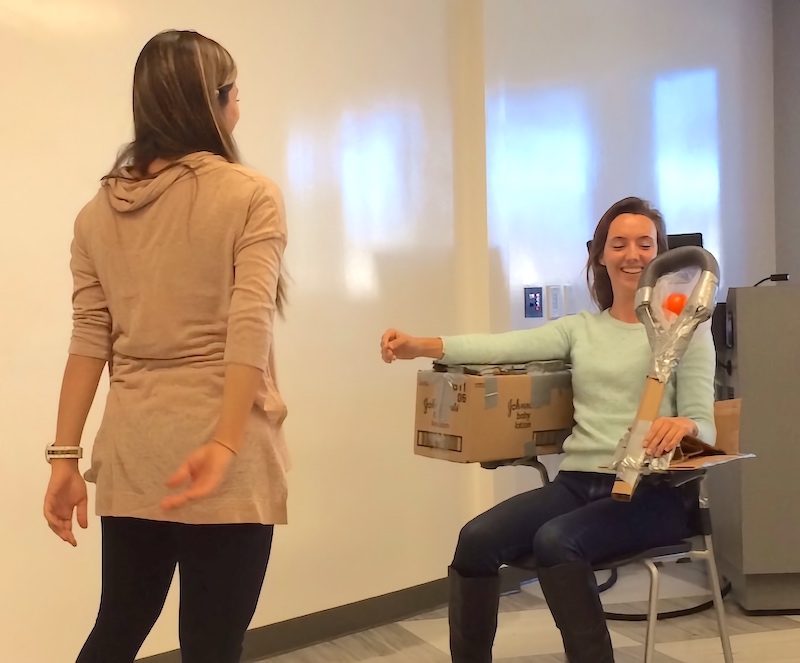
Catch Game
After prototyping our adaptive chair, I was interested in what else was out there for people with disabilities. Given what I found through my research, it seems like the possibilities are truly endless! Here are just a few of the ideas that struck my fancy.
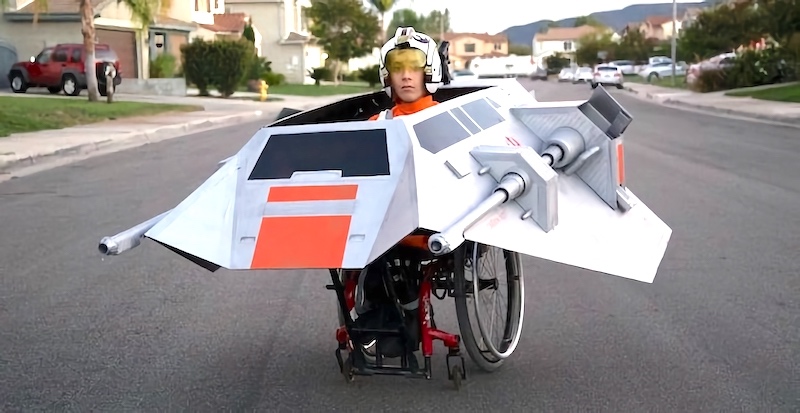
A “Star Wars” snowspeeder atop a child’s wheelchair, complete with flapping wings and working guns that shoot glowing Nerf darts

Shoes for children or adults with splints or AFOs

An adaptive croquet mallet
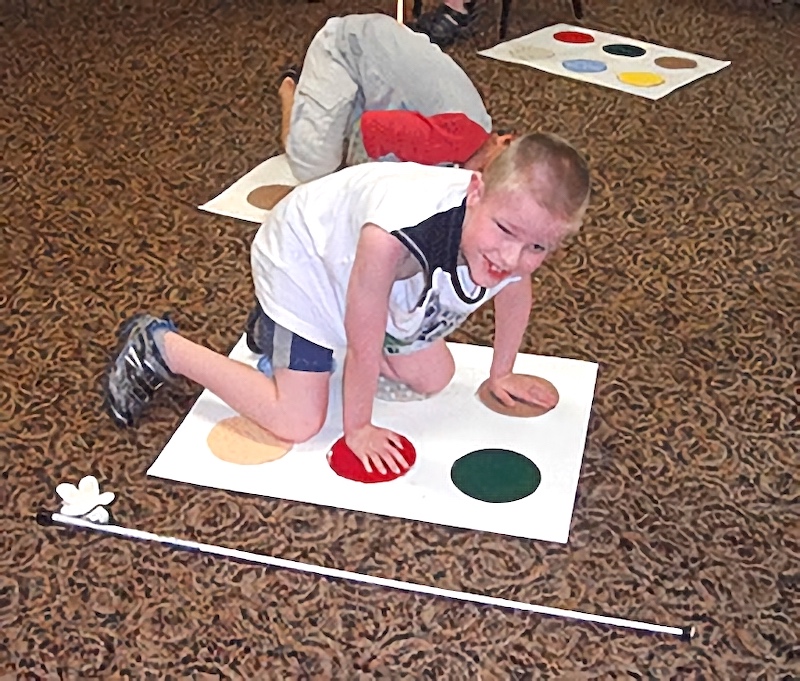
Braille Twister game
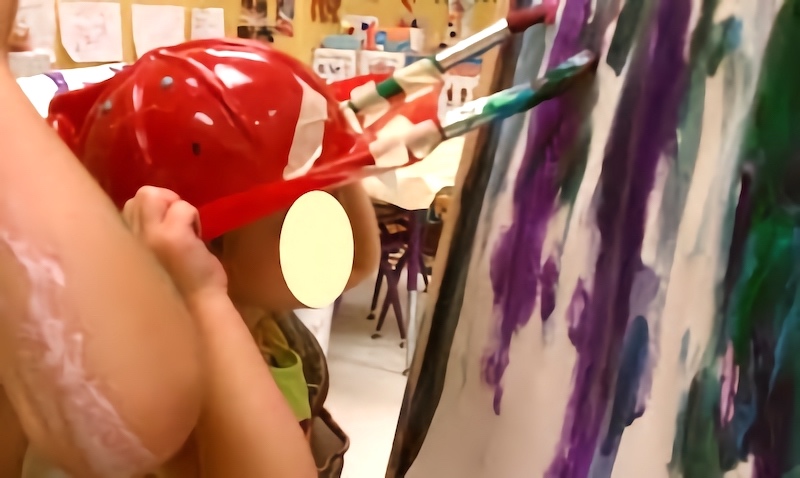
Painting with hats
These ideas, and the plethora of others out there, are such great sources of inspiration. As Maria Montessori put it, “Watching a child makes it obvious that the development of his mind comes through his movements.” We as occupational therapists have the pleasure of helping people in all walks of life — no matter what their abilities — become truly UNSTOPPABLE!
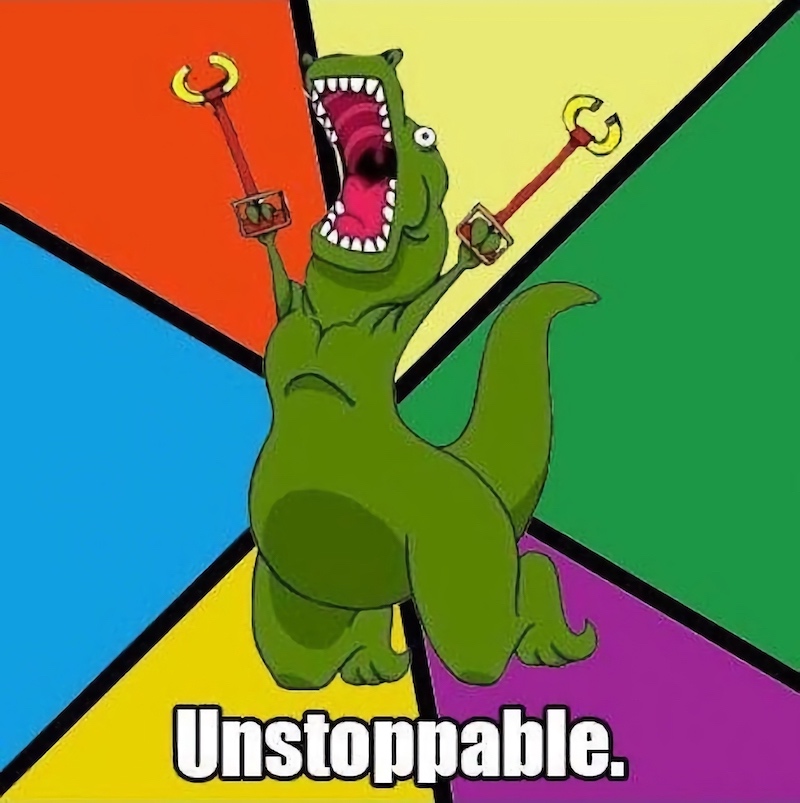
⋯

OTAC and Magic and Rose Floats, Oh My! ⟩
October 28, 2015, by Ariel
Getting Involved What are OS/OT?
Last weekend, I headed to Sacramento for the annual OTAC Conference. This conference, put on by the Occupational Therapy Association of California, is an opportunity for OTs and OT students to spend a weekend immersing themselves in the world of occupational therapy. Through its wide array of courses, symposiums, special speakers, and after hours parties, the OTAC experience always reinvigorates me and adds new perspective to the work we do.
One of my favorite parts of conference this year was listening to the keynote address. Our speaker, Kevin Spencer, gave an impassioned speech about the power of arts-integrated approaches to promote functional and social skills development. His intervention, Healing of Magic, uses the act of learning and teaching magic tricks to help patients regain lost physical skills while increasing motivational levels and self esteem. His unique intervention is a testament to the level of creativity that occupational therapists can incorporate into their interventions!
Check out this video of Kevin Spencer doing his thing!
Another awesome part of conference was participating in USC’s efforts to get Occupational Therapy a float in this year’s Rose Parade! During some down time, my classmates and I filmed an Ice-bucket-challenge-inspired video, in which we informed the public of our campaign, which will help support OT’s Centennial Vision of getting occupational therapy widely recognized and globally connected. We’ve pledged, as a department, to donate $2,017 to forward our goal. And we’ve challenged Boston University to do the same. Let the OT Rose Parade Challenge BEGIN!
When we weren’t at conference, my friends and I took advantage of Sacramento and the fall season by visiting a pumpkin patch! As someone who had never been to one before, I didn’t know what to expect. To our surprise, we found a sensory experience on our adventure we hadn’t even expected — A CORN PIT!!! As future occupational therapists, we hopped right in!
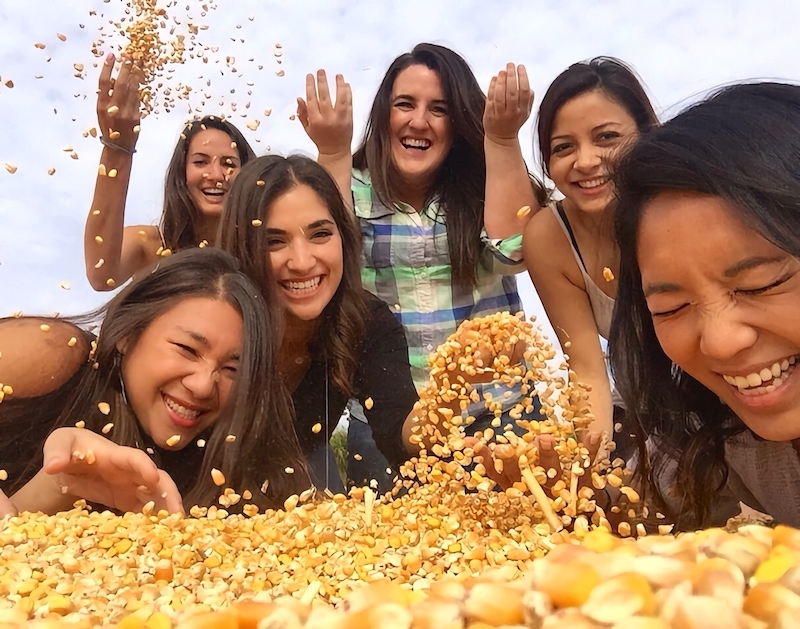
⋯

Fine Motor Merriment! ⟩
October 1, 2015, by Ariel
Classes Videos What are OS/OT?
This week in Pediatrics, we created our very own Fine Motor Toolkits! This project was one of many interactive ways in which our teachers help us process the concepts we are learning in class. Our directions for the toolkit were to use our knowledge of pediatric fine motor skill development in order to create activities that could be used as therapeutic interventions. To do so, we addressed all kinds of potential developmental challenges that children with disabilities might be struggling with: grasp patterns (for writing), in-hand manipulation, finger strength, tool use, stereognosis (the ability to perceive objects by touch), and kinesthesia (the awareness of the movements of one’s body).
We went around and shared our ideas in class; I must say, I was very impressed! It was inspiring to see what everyone had come up with for their activities. I am so lucky I get to call these creative, talented, and intelligent people my classmates.
Here is a video of one of the Pediatric Fine Motor Toolkits born out of this assignment, created by Palita Joyce Thamparipatra!

⋯





